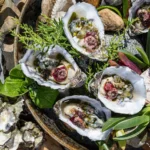Sharda Sinha, often called the “Queen of Bhojpuri Music,” is a renowned Indian folk singer known for her exceptional contributions to Bhojpuri, Maithili, and Magahi folk music. With a career spanning several decades, her melodious voice and traditional repertoire have made her a household name, especially in the northern Indian states of Bihar and Uttar Pradesh. Her music is cherished for its earthy quality and deep-rooted connection to cultural heritage, encapsulating the beauty of regional Indian folk music for audiences nationwide.
Early Life and Background
Sharda Sinha was born on October 1, 1952, in Hulas, a small village in the district of Samastipur, Bihar. Growing up in a traditional Bihari family, she was exposed to folk music from a young age, as music played an essential role in community gatherings, rituals, and festivals. Her early exposure to these sounds and rhythms deeply influenced her, fostering a passion for folk music and storytelling through song.
Sharda pursued formal education in music at Patna University, which further sharpened her skills and broadened her understanding of Indian classical and folk traditions. Though folk music was primarily a community practice, her dedication to formalizing it and sharing it with a broader audience set her apart from her contemporaries.
Musical Journey and Rise to Fame
Sharda Sinha began her musical journey in the late 1970s when folk music was largely overshadowed by popular Bollywood songs. She aimed to give a voice to the rich musical traditions of Bihar, performing songs in Bhojpuri, Maithili, and Magahi. Her efforts bore fruit in 1980 when she achieved national recognition with the release of her album “Sajna Ke Bhabhi” and the popular song “Chhath Puja.” Her renditions of Chhath songs, celebrating Bihar’s most revered festival, resonated strongly with the people, making her an iconic voice associated with the festival.
Her song “Paniya Ke Jahaj Se Patal Par” became a national hit, gaining her fame and setting her apart as an ambassador of Bihar’s cultural heritage. This was a turning point in her career, as the song crossed regional boundaries, introducing listeners from all over India to the beauty of Bhojpuri folk music.
Unique Contributions to Indian Folk Music
Sharda Sinha’s work is distinct in its commitment to authenticity. She has been a custodian of Bihari culture and has maintained the purity of Bhojpuri, Maithili, and Magahi music in her work. Unlike many artists who have adapted folk songs to modern styles, Sharda Sinha retained the raw and earthy sound of folk instruments like the dholak, harmonium, and tabla. Her music reflects the rural landscape of Bihar, with its rivers, fields, and the everyday life of the common people.
By bringing traditional folk music to the mainstream, she has preserved the essence of these regional songs, which are rooted in the lives of farmers, laborers, and villagers. Her music often features themes of love, devotion, seasonal changes, and festivals, providing a platform for underrepresented voices and themes in Indian music.
Popular Works and Iconic Songs
Among Sharda Sinha’s most beloved songs are her renditions of Chhath puja songs, which have become synonymous with the festival itself. Songs like “Ho Dinanath” and “Kahe Toh Se Sajna” are sung by millions during Chhath puja celebrations. Her popularity extended beyond Bihar with her songs featured in Bollywood movies like “Gangaajal” and “Maine Pyar Kiya,” introducing Bhojpuri folk music to a larger, diverse audience. In Maine Pyar Kiya, her song “Kahe Toh Se Sajna” became widely recognized, contributing to her nationwide fame.
Awards and Recognitions
Sharda Sinha’s remarkable contributions have earned her several prestigious awards. She was honored with the Padma Bhushan, India’s third-highest civilian award, in 2018, acknowledging her invaluable role in promoting Indian folk music. She has also received the Padma Shri in 1991 and the Sangeet Natak Akademi Award in 2015, along with many state-level recognitions for her contributions to art and culture.
Through these awards, her legacy is cemented as one of India’s most respected folk singers, whose efforts to preserve and promote traditional music continue to inspire future generations of artists.
Sharda Sinha’s Legacy and Influence
Sharda Sinha’s impact extends beyond her songs, as she has revived an interest in folk music among younger generations. Her work highlights the value of preserving and celebrating regional languages and traditions. For many Biharis, her voice represents the warmth of home, tradition, and identity, creating a bridge between generations by keeping old musical traditions alive.
In addition to her influence in music, she is seen as an icon of female empowerment in a traditionally male-dominated industry. Her success story has inspired many young women from rural backgrounds to pursue careers in music, challenging societal norms and showcasing the richness of regional art on national and international stages.
Conclusion
Sharda Sinha’s legacy as the “Queen of Bhojpuri Music” is well-deserved. Through her dedication to traditional folk music, she has not only preserved Bihar’s cultural heritage but has also introduced it to a national audience. Her songs, steeped in the rhythms and themes of rural life, resonate deeply with listeners, evoking a sense of nostalgia, pride, and joy. By keeping Bhojpuri, Maithili, and Magahi folk traditions alive, Sharda Sinha has ensured that these timeless songs continue to inspire, uplift, and unite people across regions and generations.







